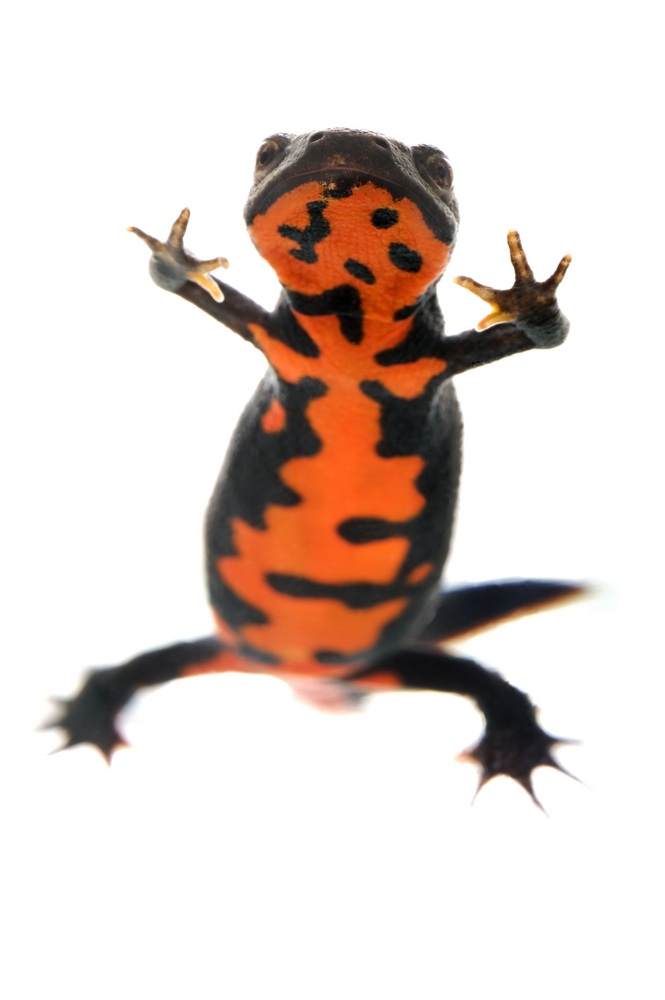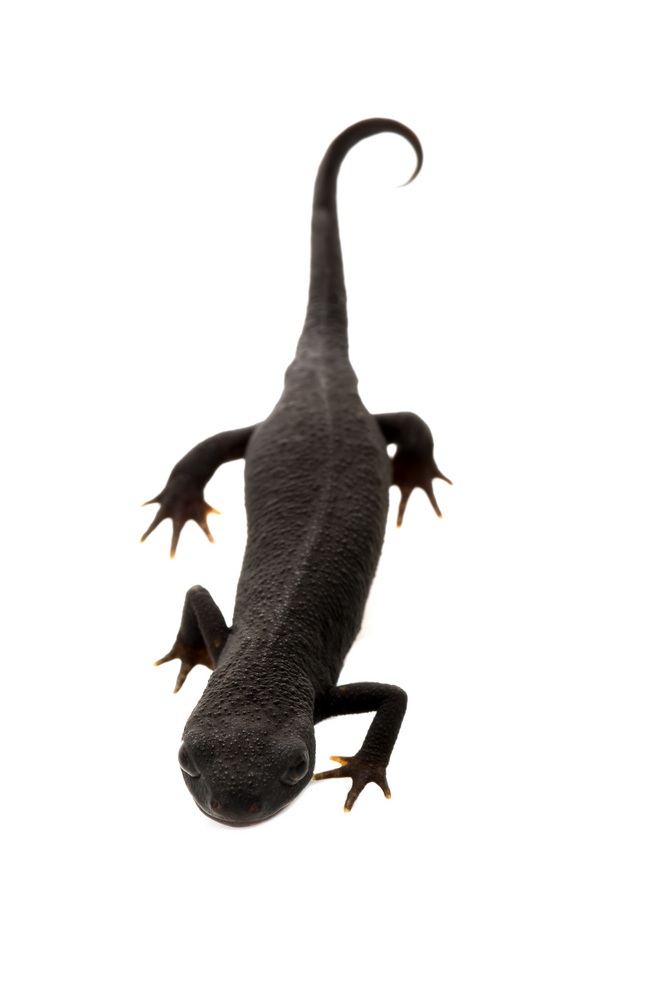Japanese Fire-bellied Newt

The coloration and markings of these popular Japanese newts are very variable. Although it is said there are six different races, it is difficult to distinguish between them with any certainty. Their upperparts can range from dark brown to black, while their underparts are often fiery red, with variable black patterning here. Sometimes, this reddish coloration may be more orange in some cases.
They grow to a length of about 12.5cm (5in) overall. Japanese fire-bellied newts (Cynops pyrrhogaster) are easy to look after, thriving in an unheated, covered aquarium at room temperature. Their quarters should incorporate a large area of water full of aquatic plants, separated from dry land with a damp mossy floor where there are plenty of hiding places present.
Although such tanks are not readily available, you can partition a tank with a suitable barrier being stuck in place using a special aquarium sealant. Do not be tempted to use an ordinary d.i.y. sealant for this purpose, because this could contain harmful chemicals. Be sure the newts can move easily in and out of the water, and they cannot injure their delicate skin on the top of the barrier.
A floor covering of gravel, above an undergravel filter, will add to the attractiveness of the aqua-terrarium. This can be augmented with a small power filter, taking care not to create turbulent water. A fluorescent light, which will not emit significant heat and mimics daylight should help to encourage plant growth if left on for up to 10 hours per day. When ever adding fresh water, always treat it with a water conditioner to remove chlorine and similar compounds.
Breeding
These attractive newts can be bred quite easily in aquarium surroundings. Lowering the temperature in their quarters for a couple of months over the winter, when they often come on to land, will stimulate breeding activity in the spring. This is the time they can be sexed most easily, as the female swells with eggs. The males, with enlarged cloacas at the base of the tail, will then fan their tails as part of their display.
The female newt diligently lays each of her eggs separately on the underside of water plants such as Canadian pondweed (Elodea canadensis), folding the leaves over to conceal their presence. She fire-bellied newt from abovemay produce as many as 200 eggs during this period.

It is safest to hatch these in a separate aquarium, with the tadpoles emerging about three weeks later. Tiny water creatures will serve as a first food, being augmented with powdered flake food sold for fish. This is easily prepared by rolling it through your fingers. The young newts will emerge on to land about 3-5 months later, with damp sphagnum moss being an ideal substrate for them.
Ensure they can move easily between the land and water area of their enclosure. They will hunt small invertebrates such as pinhead crickets, whiteworms, aphids and the small form of the waxworm at first.
Adult care
These newts start to become mature around 2 years old, and will then spend much more of their time in the water. They may live for over a decade, and adults can be fed easily on items such as Tetra Fin Gold Colour food, which is actually a pelleted goldfish food. This is more readily obtainable than special amphibian pellets and yet also helps to maintain the vivid fiery coloration of their underparts. They need feeding every two or three days.
Simply tip about 10 of these small pellets on the surface for a pair, adjusting the amount of food offered to ensure none is wasted, to prevent it from polluting the water. If you use amphibian pellets, choose the right size, based on that of your newts, and if doubt, buy the smaller size. These foods can be supplemented with Tetra Fresh Bloodworms, which come in a vitamin enriched jelly, although you can also offer fresh bloodworms if these are available. Adults need to be fed two or three times a week, rather than daily like young newts.